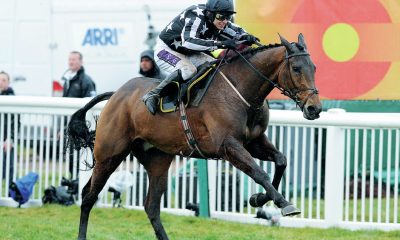
Why betting on horse racing is unique from any other sports

You can trace the origins of having a flutter on the horses back more than a century – in fact, there’s evidence to suggest that as far back as the 1800s, punters were having a spare shilling or two on the racing.
The lure of the sport is hard to resist, both in terms of preparation – visiting the Horse Race Site, to check the latest news and form, before looking at the weather to see how the going might change over the course of a meeting – and on race day itself.
The anticipation, the parade ring rumours, the cacophony of noise that greets the horses as they reach the final furlong…. it’s spine-tingling stuff.
Betting on horse racing is unique in the sense that there are often so many variables to consider with each race. When wagering on football, tennis, boxing and the like, we will normally have a good idea of who will win using our instincts for the sport in question.
But in horse racing, there are many more questions to answer.
Is the going good?
As we know, a racecourse can run the full gamut of going – from good ground that typically results in faster-run races, to turgid and boggy heavy ground that suits the stayers and those with extra gas in the tank.
Understanding which horses run well in which conditions will largely dictate your bets…. particularly when there are extremes in the going.
Going the distance
Usain Bolt might be the fastest man on the planet, but he wouldn’t beat Mo Farah over 10,000m – likewise, the British Olympic champion wouldn’t be able to take down the Jamaican in a 100m sprint.
The same rules apply in horse racing, and an examination of a horse’s form will reveal which trip they fare best at – or, perhaps, their previous outings reveal a horse that might prosper from a change in distance…. some thrive when stepping up to three miles, for example.
Again, the devil is in the detail.
The major obstacle
It’s always fascinating to watch the start of the new National Hunt season, primarily with one eye on seeing how hurdlers do when entering chase races for the first time.
The larger obstacles, and typically longer distances, can see the most promising horse flounder, while those that had unconvincing hurdling careers are suddenly reborn when mixing with the big boys and girls.
In the first few weeks and months of the season, it pays to be extra diligent in your research and analysis of your bets – particularly when betting on novice chases in which the conditions can be new to many horses in the field.
Taking on the handicapper
Imagine a football match where the team made a heavy favourite with the bookmakers has to wear lead in their boots or chainmail shirts. The playing field would be levelled considerably, right?
That is essentially the task of the handicapper in horse racing although, of course, the horses are simply weighted down via their saddles, rather than being made to wear ice skates or something ridiculous like that.
The serious point is that no other sport has such a handicapping system – making horse racing betting all the more satisfying to try and unravel.























